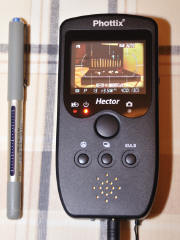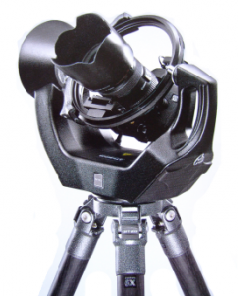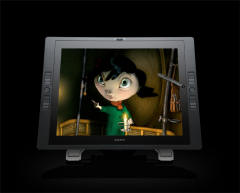Article
Focus on Imaging 2010
8th March 2010
This years Focus on Imaging show was the 21st since it began. We took
time out to have a day looking around, to see what new gadgets were about to
help us with our photography, what new or expanded services were now
available and to see if we could gauge what was currently the market mood.
As usual it was in the same two halls of the NEC, halls 9 and 10 and
although not as many stands, or even variety of stands as at previous shows
over recent years, there were more sitting and chill out places it was still
worth the visit to find out who was still in the market place. Of course the
big names like, Nikon, Canon, Epson, Fuji, Lastolite, Jacobs, Wacom, Sigma,
SpeedGraphic, and more were there as well as membership organisations and
some of the photo magazines such as Outdoor Photography and Digital
Photographer as well as many of the smaller retailers and manufacturers of
products. So what took did we look at this year.
Of course at this show you not only get to see the latest technology and
accessories but many stands are attracted to attend by the ability for us to
be able to purchase direct from them while we are there. Many if not all
offer show discounts if you buy or sign up right now. Well we did buy a
couple of items, useful gadgets I think you'd call them.
The first gadget that caught my attention was was a LiveView remote, the
Phottix Hector, I could see that when it would help me considerably with my
macro photography, particularly when it was very close to the ground and I
just can't bend that far or it's too wet to do so, or if I wanted to get
higher, only being 5ft 2" does give some limitations, and with this I
wouldn't need to use steps, I could put the camera on the tripod and extend
higher than I could see. The Hector connects via a cable and using the
Liveview mode on my Nikon D300 I can see on Hectors screen what the camera
can see, and with its inbuilt shutter release I don't need to be able to get
to the shutter button the camera either. There is also a wireless version,
called the Hero,
so you can be further away from the camera. We have a more detailed article
on the
Photix - Hector,
 so take a look. so take a look.
|
  |
On the same stand we also purchased the
Phottix Lambancy - Flash Diffuser
 a device, similar to a Lightsphere, which fits onto your speedlight flash to
give bounced flash light in locations where light cannot be bounced easily.
Its portable, lightweight and easy to carry around. At a cost of around £25
its a good addition to your camera bag. As well as an article looking at it
in more detail, we also have one which compares this with other methods, see
Flash diffuser - lambency
compared.
a device, similar to a Lightsphere, which fits onto your speedlight flash to
give bounced flash light in locations where light cannot be bounced easily.
Its portable, lightweight and easy to carry around. At a cost of around £25
its a good addition to your camera bag. As well as an article looking at it
in more detail, we also have one which compares this with other methods, see
Flash diffuser - lambency
compared.

 
Staying with light, there was another product called Litepanels Micro, which
were miniature lights similar to what is used by television and broadcast
news. They fit on the top of your camera where the flash would go, but give
out constant light from their LED panels. They get their power from using 4
AA batteries. They are said to be flicker free and heat free and the light
remains constant. They also come with a dimmer switch so the amount of light
they emit can be from 100% to 0, giving front on soft light. They are in
fact a portable version of studio Cool-Lites. See our article
Cool-Lite's Explained
 to
find out how these work and what their benefits are for a studio situation.
Now you can have the same by mounted on your camera and you're not
restricted to staying indoors. For more information on the Litepanels see
www.litepanels.com. to
find out how these work and what their benefits are for a studio situation.
Now you can have the same by mounted on your camera and you're not
restricted to staying indoors. For more information on the Litepanels see
www.litepanels.com.

Probably the most expensive tripod head that I
came across at the show was the Gitzo Athena Electric Device. At a cost of
around £5,000 it's probably not for most, but if you have an application for
it, it will probably be a useful aid. So what is it, well it's a large motor
driven tripod head. It is remote-controlled and gives stable and precise 3D
movement. It is said to be good for nature as its operation is quiet and
sports where variability and unpredictability are always present, but it can
also be used for architecture or scientific settings when you need to
isolate details and precise positioning of the camera is required. It would
also be good for taking images that you wanted to stitch together as the
minute movement would mean not so much is lost in overlap and it would be
more precise, or for doing a sequence of images with small amounts of
movement and of course would be good for time lapse as you can program it to
perform minute movements. It moves with precision of 0.1 degree on 3 axis
which are fully independent of tilt, pan and level, panning vertically,
horizontally or rolling over on a swivel, but it also has a self levelling
mechanism. It connects to a computer and from here the user can move and set
the head to the right position using the camera's Liveview mode. You can
also input saved camera positions. It connects to the computer either via an
Ethernet cable, or wirelessly and it has a built in USB in order to plug in
any compatible Wi-fFi key. See
Gitzo website
 to keep up
to date with new products and launches. to keep up
to date with new products and launches. |

 Gitzo Athena Gitzo Athena |
There are now a number of instant canvas
framing kits on the market. It is now possible to print at home your photos
on canvas and with these framing kits, frame it yourself and hang within
minutes and with no specialist tools or knowledge. This year the only
noticeable thing was that there are now more suppliers of these kits of
differing designs, and the prices have come down considerably. Last year I
saw the
Hahnemuhle Gallerie Wrap System
 in
operation, with the ability to buy kits that would take both A4 and A3 sized
canvases, so you could print the canvas on your office/home A4 or A3+
printer. Everything is included in the kit, their starter kit which produces
2 x 12"x8" pictures includes 2 x A3 canvas sheets, 2 x 8" stretcher bars and
2 x 12" stretcher bars, 4 x positioning corners, 1 bottle of glue and metal
corner pins, today this will set you back £21.99 from Warehouse Express.
They now have two ranges the
Gallerie Wrap Standard in
operation, with the ability to buy kits that would take both A4 and A3 sized
canvases, so you could print the canvas on your office/home A4 or A3+
printer. Everything is included in the kit, their starter kit which produces
2 x 12"x8" pictures includes 2 x A3 canvas sheets, 2 x 8" stretcher bars and
2 x 12" stretcher bars, 4 x positioning corners, 1 bottle of glue and metal
corner pins, today this will set you back £21.99 from Warehouse Express.
They now have two ranges the
Gallerie Wrap Standard
 which has
stretcher bars from 8 inches to 24 inches and
Gallerie Wrap Professional which has
stretcher bars from 8 inches to 24 inches and
Gallerie Wrap Professional
 which has
six different stretcher bar lengths from 13 inches to 40 inches, so much
larger pictures can be achieved, although of course at the larger sizes
can't be printed on your home/office printer. which has
six different stretcher bar lengths from 13 inches to 40 inches, so much
larger pictures can be achieved, although of course at the larger sizes
can't be printed on your home/office printer.
At this years show I took at look at the
Wunderbars System which has been produced for Fujifilm and was on their
stand. This system has been produced with constant tension stretcher bars
and they come in a range of sizes from 8 inches up to 48 inches. They have
self tensioning corner blocks and they claim is stays taught and will
contract and expand to the rooms temperature and humidity. Each frame has a
spring pin mechanism which automatically stretches the canvas and ensures it
stays that way, no wedges are needed. To put the canvas picture together the
only tool you need is a staple gun. The stretcher bars come in two different
woods, Tulip Wood and Scandinavian Pine. This system seems a lot easier to
put together with no messy glues or glue tabs and with it's constant
tensioning system you don't have to worry about canvas sag, so it should
last. An A3 frame would cost you £14.03. For more details on this system and
a short video showing you how it goes together see
www.wunderbars.com.

Another area I particularly wanted to look at
and update my knowledge on was photobooks. There are many companies now in
this market from do it yourself at home packages, the local supermarket, to
online suppliers, to quality producers for top quality bound versions used
by wedding photographers etc. The books also come in a range of qualities
and styles. Most if not all have start prices for just one copy, so no large
volumes have to be purchased. So it now possible to create your own coffee
table book using your images, simply put together with online or free
downloaded software and it arrives with you 7-10 days later once printed. At
the show
Paper
Spectrum
 were
showcasing their Pinnacle range of print your own Mybook Photo Books in A4
and A3 sizes with prices starting at £17.24 for 20 sheets of paper (40
sides). Blurb were
showcasing their Pinnacle range of print your own Mybook Photo Books in A4
and A3 sizes with prices starting at £17.24 for 20 sheets of paper (40
sides). Blurb
 were
showing their system of downloading their free software onto your computer,
create your book using their standard layouts at your own speed in your own
environment, choose tjhe size of your book from 6 pre-defined sizes and your
cover and upload, place your order. They also have a Share or Sell facility
where you can price, promote and sell your books in their online bookstore.
Paperback books start at £6.95.
BobBooks were
showing their system of downloading their free software onto your computer,
create your book using their standard layouts at your own speed in your own
environment, choose tjhe size of your book from 6 pre-defined sizes and your
cover and upload, place your order. They also have a Share or Sell facility
where you can price, promote and sell your books in their online bookstore.
Paperback books start at £6.95.
BobBooks
 system
allows you to create a coffee table book and come with a fully photographic
gloss wrap around cover, custom made to your requirements. So you download
their software, put together your book offline, choose your book format,
drag and drop photos where you want them, add text and then send completed
book to them online. In 7-10 days it arrives with you delivered to your
door. Fotoboox system
allows you to create a coffee table book and come with a fully photographic
gloss wrap around cover, custom made to your requirements. So you download
their software, put together your book offline, choose your book format,
drag and drop photos where you want them, add text and then send completed
book to them online. In 7-10 days it arrives with you delivered to your
door. Fotoboox
 took the
time to show me how their software worked, it was simple once its downloaded
onto your computer, you merely drag and dropped your images into the pages,
you could add page backgrounds, text, styles and loads more. They have 6
sizes of books from A5 to A3 and prices start at £9.99. If you are already
into selling your photos and working for clients and you want to offer this
service to your customers then they also have an application that allows you
to add this facility with your own branding to your website, but the orders
go straight through to them where they take the money on your behalf and get
the product printed and despatched to your customer. There were many more.
If you are interested in finding out more about photobooks, how you go about
creating them and where to get them printed then see our articles on this
topic
Making
your own Photography Book took the
time to show me how their software worked, it was simple once its downloaded
onto your computer, you merely drag and dropped your images into the pages,
you could add page backgrounds, text, styles and loads more. They have 6
sizes of books from A5 to A3 and prices start at £9.99. If you are already
into selling your photos and working for clients and you want to offer this
service to your customers then they also have an application that allows you
to add this facility with your own branding to your website, but the orders
go straight through to them where they take the money on your behalf and get
the product printed and despatched to your customer. There were many more.
If you are interested in finding out more about photobooks, how you go about
creating them and where to get them printed then see our articles on this
topic
Making
your own Photography Book
 Printing Photo Books Yourself
Printing Photo Books Yourself
 and others.
and others.
Wacom were showing off
their latest screen/tablet the Cintiq 21UX with its 21.3" large format LCD
giving more work area. The screen resolution being 1600x1200 pixels. It's
new design is also ambidextrous with identical control keys and touch strip
toggle buttons on both sides so now works for both left and right handed
users. The touch strips allow you to control up to four application-specific
functions such as brush size, zooming, scrolling and canvas rotation. The
touch sensitive pen now detects 2048 levels of pressure giving more control
over line weight, opacity and exposure and is more intuitive at angles. The
screen also moves position it can recline between 10 and 65 degrees as well
as being able to be taken off its stand and laid flat on a tabletop allow
you to get the most comfortable working position. It can also work in either
landscape or
 |
 |
portrait view modes but it can also rotate through 180 degrees
in either direction allowing you to position it to your natural arm
movement. It can also be colour calibrated to match other displays as well
as output devices. The pen has been designed to have a more natural feel
with a contoured barrel that minimizes grip effort and makes it more natural
to use, the pen nibs are also removable and the pen stand not only holds the
pen but comes with compartment containing different pen nibs and a pen nib
removal tool. At a cost of around £1,500 it's not cheap but you are getting
two products in one a 21" screen and a tablet and if you do a lot of photo
editing you may find this more useful than you think. For more details see
the
Wacom website.

The show was busy and although probably no
headline grabbing product which jumped out and said buy me, with today's
market of having to buy more online it is a good place to go to each year if
nothing else just to get to see and feel the products on offer. If you
didn't get there this year, then try and make time for next years show.
Next Years Focus on Imaging Show at the NEC,
Birmingham is on:
6th to 9th March 2011
See
Focus-on-Imaging
 website for more details and update on who
and what will be exhibiting.
website for more details and update on who
and what will be exhibiting.
See Also:
3D Section
 |